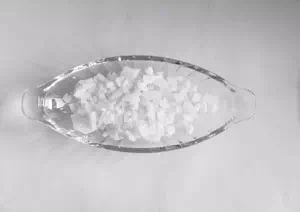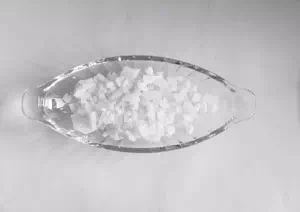All Categories


polyethylene glycol CAS 25322-68-3, golyethylene glycol, CAS 25322-68-3
Polyethylene glycol (PEG), also known as polyethylene glycol ether, is a polymer compound widely used in the chemical industry. Its distinctive chemical formula is HO (CH₂CH₂O) ₙH.
CAS : 25322-68-3
Formula :
EINECS : 500-038-2
Chemical Name: | Polyethylene Glycol |
Other Name: | Poly(ethylene glycol); PEG; Polyethylene glycol powder |
CAS: | 25322-68-3 |
EINECS: | 500-038-2 |
Type: | Food additives; Pharmaceutical raw materials; Organic raw materials; Inorganic salts; Cosmetic raw materials; Pharmaceutical intermediates |

Polyethylene glycol (PEG), also known as polyethylene glycol ether, is a polymer compound widely used in the chemical industry. Its distinctive chemical formula is HO (CH₂CH₂O) ₙH. This compound is synthesized through a series of precisely controlled stepwise addition reactions using ethylene oxide and water or ethylene glycol as starting materials. These base materials are usually derived from oil products in the petroleum refining process. After specific chemical treatments, polyethylene glycol with a variety of excellent properties is formed.
As the polymerization reaction proceeds continuously, the molecular weight of polyethylene glycol gradually increases, which leads to significant changes in its physical appearance and physical properties. Specifically, when the molecular mass of polyethylene glycol is between 200 and 600, it presents a fluid state at room temperature and has good fluidity. However, once the molecular mass exceeds 600, polyethylene glycol begins to gradually transform into a semi-solid form, showing more viscous and solid properties. As the molecular weight further increases, the color, odor and viscosity of polyethylene glycol and other properties will also change accordingly. At first, it may be a colorless and odorless viscous liquid, but as the molecular weight increases, it will gradually transform into a waxy and highly viscous liquid. At the same time, its moisture absorption capacity will also decrease accordingly. This is because the tightness of the molecular structure increases, making it more difficult for water molecules to penetrate and adsorb.
Polyethylene glycol not only has excellent physical properties, but also demonstrates outstanding chemical stability and diversity. It possesses the chemical properties of alcohol and can undergo esterification reactions with fatty acids to form ester compounds. In addition, polyethylene glycol is highly soluble in water, ethanol and a variety of natural organic solvents, which enables it to play an important role in many chemical reactions and industrial applications. Meanwhile, polyethylene glycol exhibits excellent stability against temperature, acids and bases, and does not react with most chemical substances, which further enhances the safety and wide application of it.
It is worth mentioning that polyethylene glycol also has excellent hygroscopicity, adhesion and lubricity. These characteristics make it widely applied in multiple fields such as cosmetics, pharmaceuticals, food processing and mechanical lubrication. More importantly, polyethylene glycol is non-toxic and non-irritating, and it does not cause harmful effects on humans or animals, which provides a solid foundation for its application in the medical and biological fields.
Polyethylene glycol (PEG) has another notable property, which is its hygroscopicity in its solid state. Even at typical ambient temperatures, it can absorb a certain amount of moisture from the air. Moreover, when it exists in liquid form, it can be mixed with water in any proportion to form a uniform solution. This property enables polyethylene glycol to play a significant role in many situations where humidity regulation or dissolution of other substances is required.
Regarding the thermal stability of polyethylene glycol, it can undergo oxidation reactions with oxygen in the air above 120℃. Therefore, during storage and transportation, inert gases such as carbon dioxide or nitrogen are usually used to protect polyethylene glycol to prevent its oxidation and deterioration. Experiments show that polyethylene glycol does not undergo obvious transformation or decomposition within the temperature range of 200℃ to 240℃. However, when the temperature rises close to 300℃, the structure of polyethylene glycol will change due to the start of breaking and destruction of chemical bonds in the molecular chain, thereby affecting its performance and application effect.
Melting point | 64-66 °C |
Boiling point | >250°C |
density | 1.27 g/mL at 25 °C |
vapor density | >1 (vs air) |
vapor pressure | <0.01 mm Hg ( 20 °C) |
refractive index | n20/D 1.469 |
Fp | 270 °C |
storage temp. | 2-8°C |
solubility | H2O: 50 mg/mL, clear, colorless |
form | waxy solid |
color | White to very pale yellow |
Specific Gravity | 1.128 |
PH | 5.5-7.0 (25℃, 50mg/mL in H2O) |
Water Solubility | Soluble in water. |
Sensitive | Hygroscopic |
λmax | λ: 260 nm Amax: 0.6 |
Merck | 14,7568 |
Stability: | Stable. Incompatible with strong oxidizing agents. |
In our rich and colorful daily life, there exist all kinds of typical polymer compounds. Under normal circumstances, these polymer compounds often exhibit the property of being insoluble in water. In fact, there are complex chemical principles and factors related to molecular structure behind this. For instance, their molecular chains are long and complex, and the intermolecular forces are relatively large, making it difficult for water molecules to break through the intermolecular constraints and dissolve them.
However, among these numerous polymer compounds, polyethylene glycol stands out. It shows extremely high solubility in water, and this special solubility property has attracted extensive attention from scientists. If we explore the reasons in depth, we will find that it is due to the presence of oxygen atoms in polyethylene glycol particles. These oxygen atoms do not exist in isolation. They interact extremely strongly with the surrounding water particles, and this interaction is what we are familiar with as hydrogen bonds.
When we carefully put polyethylene glycol into the water, a wonderful phenomenon occurred. Each polyethylene glycol molecule seems to possess a unique "affinity", and they will actively mix thoroughly with several surrounding water molecules. This kind of mixture is not a simple physical contact, but a deep integration at the molecular level. During this process, polyethylene glycol molecules and water molecules are closely linked together through forces such as hydrogen bonds. Therefore, even though the molecular weight of polyethylene glycol is as high as tens of thousands and its particles are relatively large, it can still dissolve rapidly in water without precipitation or difficulty in dissolution.
Moreover, polyethylene glycol not only exhibits excellent solubility in aqueous solutions, but also shows remarkable good solubility for several organic compounds. This unique solubility makes polyethylene glycol widely used in many fields.
It is precisely because of this special property of polyethylene glycol that it plays a crucial role in many household chemicals that we frequently use in our daily lives. For instance, in cosmetics, whether it is face cream, lotion or facial cleanser and other products, polyethylene glycol may be one of the important ingredients. In terms of toiletries, such as shampoo and body wash, polyethylene glycol is often added to improve the performance of the products. Even the toothpaste that we use every day when brushing our teeth may contain polyethylene glycol.
One of the main characteristics of polyethylene glycol in these household chemicals is that it can function as a solvent or surfactant. In cosmetics, different functional ingredients often have various chemical activities, and some ingredients may be difficult to blend with each other. Polyethylene glycol, as a solvent or surfactant, acts like an outstanding "mediator", helping these components with different chemical activities to be fully mixed together, making the texture of cosmetics more uniform and stable, and thus better exerting their skin care and beauty effects.
Meanwhile, due to the strong interaction between polyethylene glycol and water, when it is added to these household chemicals, it is like injecting a "moisturizing power" into the products. It can help the product maintain a certain level of humidity during use, preventing our skin or hair from being damaged due to excessive dryness. For instance, after washing your hair with shampoo containing polyethylene glycol, your hair will feel smoother and more moist, and it is less likely to become dry and tangle.
In addition, some daily chemicals need to have a certain viscosity to meet people's usage requirements. In this regard, polyethylene glycol has once again played an important role. Considering that low-molecular-weight polyethylene glycol itself is a viscous liquid, when it is added to related products, it can significantly increase the viscosity of these everyday chemicals. For instance, in some moisturizing lotions, the presence of polyethylene glycol gives the lotion an appropriate viscosity, which is not only convenient to apply but also forms a protective film on the skin surface, achieving a better moisturizing effect.
* Prompt reply and 24 hours online, professional team to provide best price and high quality product.
* Sample testing support.
* Every batch of products will be tested to ensureits quality.
*The packing also can be according the customers` requirment.
*Any inquiries will be replied within 24 hours.
*we provide Commerical Invoice, Packing List, Bill of loading, COA , Health certificate and Origin certificate. If your markets have any special requirements, let us know.